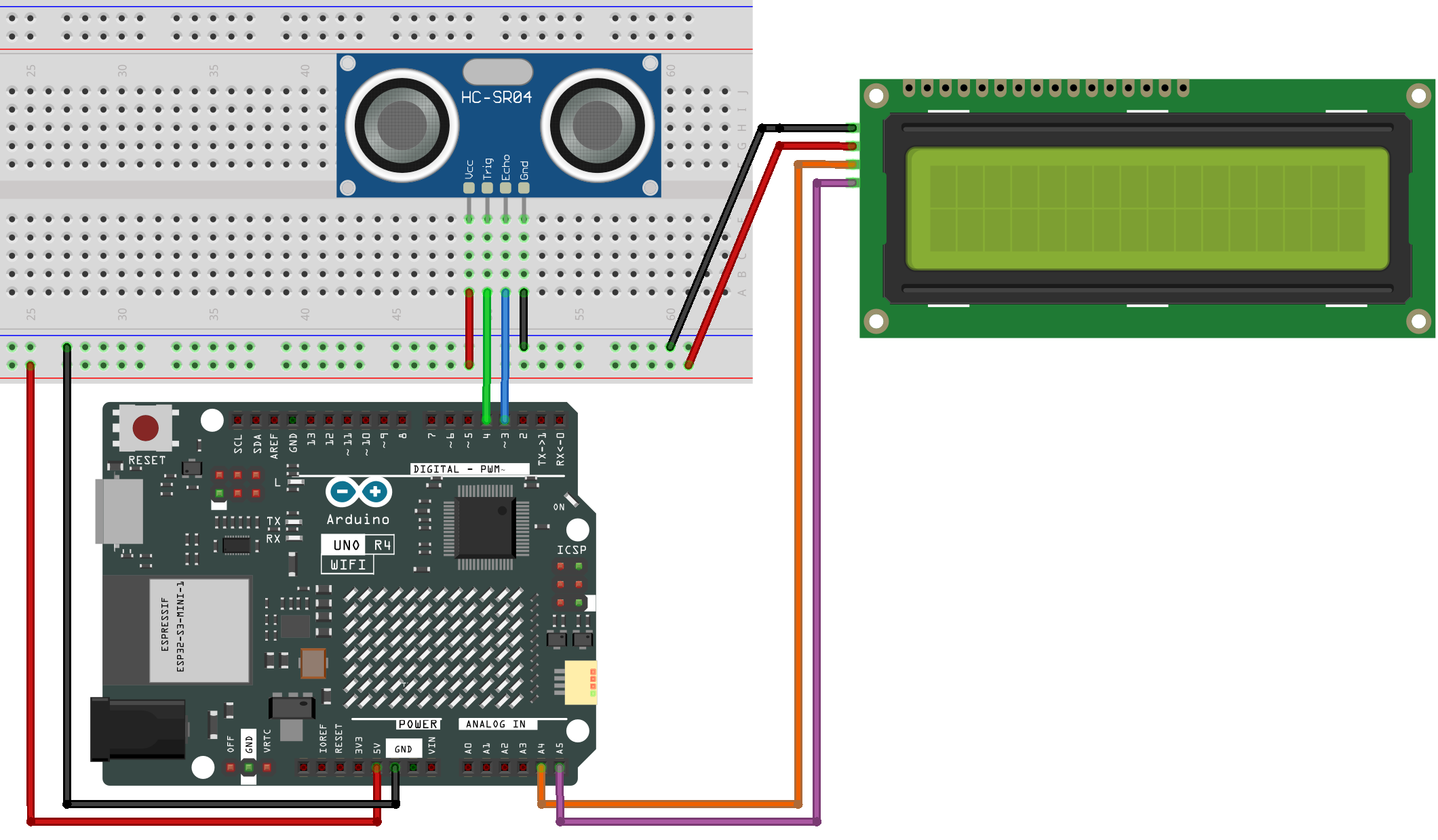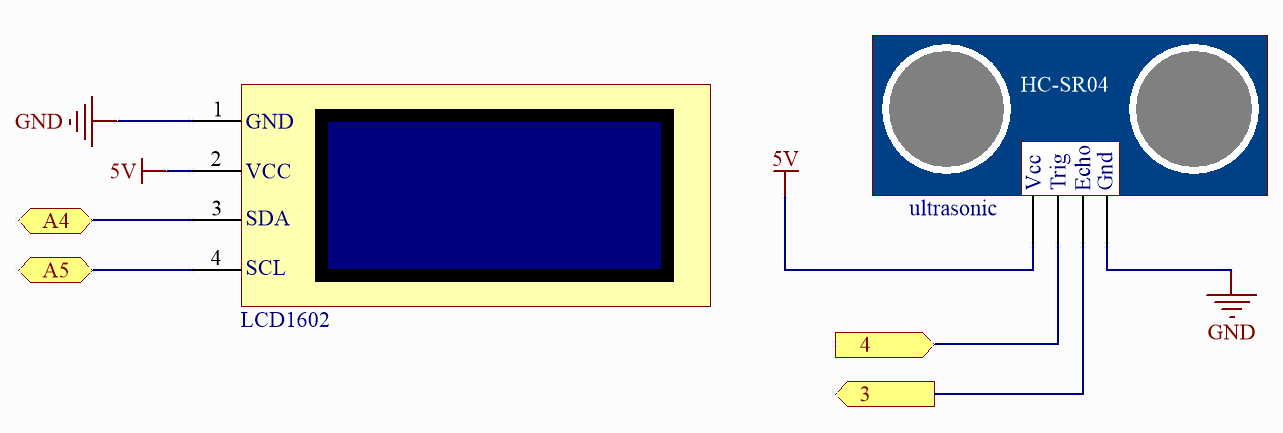Ultrasonic¶
Overview¶
When you are reversing, you will see the distance between the car and the surrounding obstacles to avoid collision. The device for detecting the distance is an ultrasonic sensor. In this experiment, you will learn how the ultrasonic wave detects the distance.
Required Components¶
In this project, we need the following components.
It’s definitely convenient to buy a whole kit, here’s the link:
Name |
ITEMS IN THIS KIT |
LINK |
|---|---|---|
Elite Explorer Kit |
300+ |
You can also buy them separately from the links below.
COMPONENT INTRODUCTION |
PURCHASE LINK |
|---|---|
- |
|
Wiring¶

Schematic Diagram¶

Code¶
Note
You can open the file
06-ultrasonic.inounder the path ofelite-explorer-kit-main\basic_project\06-ultrasonicdirectly.Or copy this code into Arduino IDE.
Code Analysis¶
1. Initialize the ultrasonic sensor and LCD1602
#include <LiquidCrystal_I2C.h> LiquidCrystal_I2C lcd(0x27, 16, 2); // initialize the Liquid Crystal Display object with the I2C address 0x27, 16 columns and 2 rows // Define the pin numbers for the ultrasonic sensor const int echoPin = 3; const int trigPin = 4; void setup() { pinMode(echoPin, INPUT); // Set echo pin as input pinMode(trigPin, OUTPUT); // Set trig pin as output lcd.init(); // initialize the LCD lcd.clear(); // clear the LCD display lcd.backlight(); // Make sure backlight is on }
2. Display the distance on the LCD1602
void loop() { float distance = readDistance(); // Call the function to read the sensor data and get the distance lcd.setCursor(0, 0); //Place the cursor at Line 1, Column 1. From here the characters are to be displayed lcd.print("Distance:"); ////Print Distance: on the LCD lcd.setCursor(0, 1); //Set the cursor at Line 1, Column 0 lcd.print(" "); //Here is to leave some spaces after the characters so as to clear the previous characters that may still remain. lcd.setCursor(7, 1); //Set the cursor at Line 1, Column 7. lcd.print(distance); // print on the LCD the value of the distance converted from the time between ping sending and receiving. lcd.setCursor(14, 1); //Set the cursor at Line 1, Column 14. lcd.print("cm"); //print the unit "cm" delay(800); // Delay for 800 milliseconds before repeating the loop }
3. Convert the time to distance
float readDistance(){// ...}Here, “PING” refers to the process where the ultrasonic sensor sends out an ultrasonic pulse (or “ping”) and then waits for its echo.
PING is triggered by a HIGH pulse of 2 or more microseconds. (Give a short LOW pulse beforehand to ensure a clean HIGH pulse.)
digitalWrite(trigPin, LOW); delayMicroseconds(2); digitalWrite(trigPin, HIGH); delayMicroseconds(10); digitalWrite(trigPin, LOW);The echo pin is used to read signal from PING, a HIGH pulse whose duration is the time (in microseconds) from the sending of the ping to the reception of echo of the object. We use the following function to obtain the duration.
pulseIn(echoPin, HIGH);The speed of sound is 340 m/s or 29 microseconds per centimeter.
This gives the distance travelled by the ping, outbound and return, so we divide by 2 to get the distance of the obstacle.
float distance = pulseIn(echoPin, HIGH) / 29.00 / 2; // Formula: (340m/s * 1us) / 2